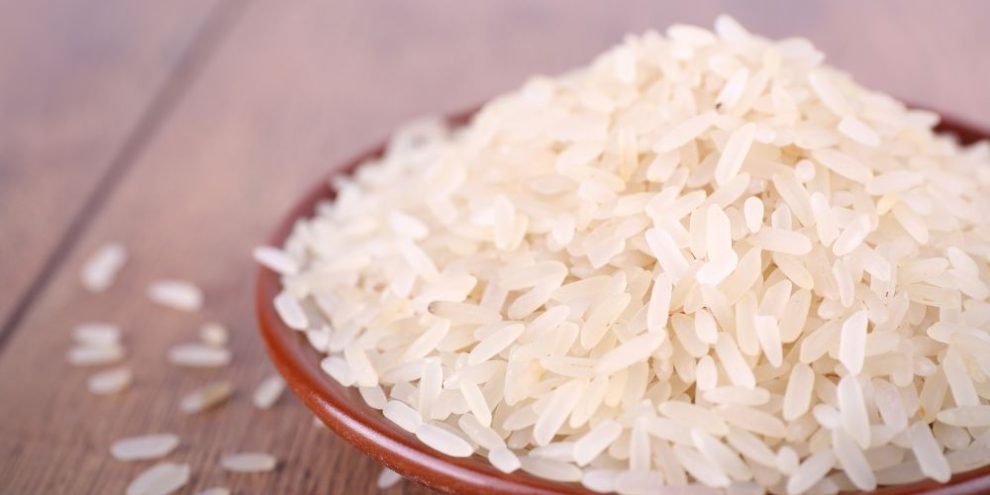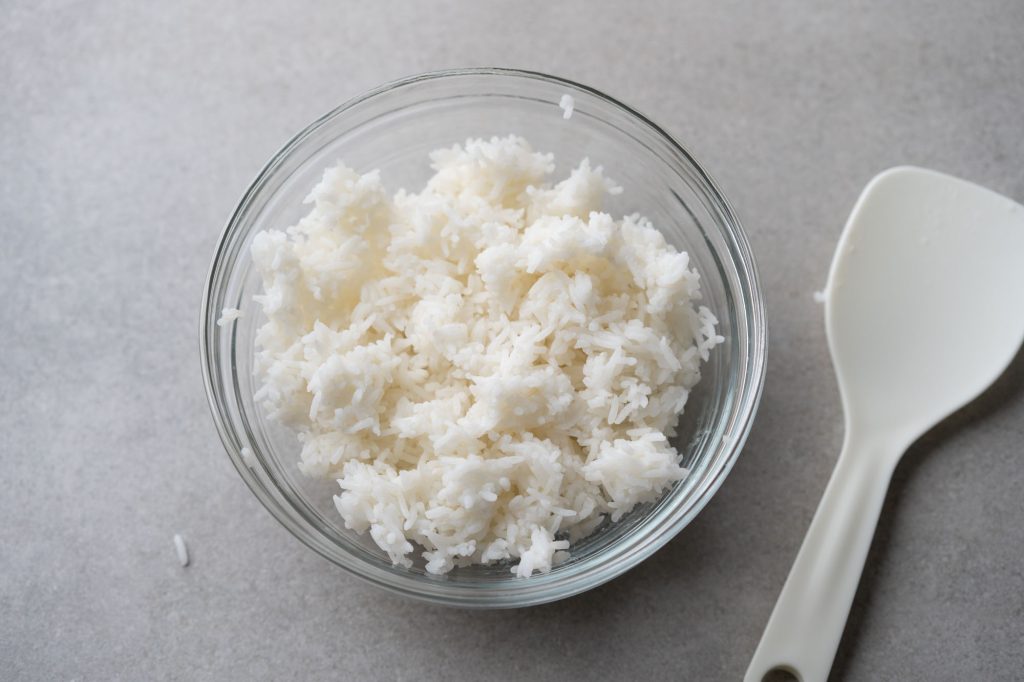Have you ever wondered how long cooked rice can safely sit out before it becomes a risk? You might think leaving it on the counter for a few hours is no big deal, but the truth could surprise you.
Knowing the right time frame can protect you and your family from food poisoning. You’ll discover exactly how long cooked rice can be left out, why timing matters, and simple tips to keep your meals safe. Keep reading to avoid common mistakes that many people overlook when storing rice.

Credit: www.instagram.com
Risks Of Leaving Cooked Rice Out
Leaving cooked rice out at room temperature creates a risk for food safety. Rice can develop harmful bacteria quickly. These bacteria produce toxins that cause illness. Understanding these risks helps prevent food poisoning and keeps you safe.
Bacterial Growth And Toxins
Cooked rice contains spores of a bacteria called Bacillus cereus. These spores survive cooking and multiply fast at room temperature. The bacteria produce toxins that heating cannot destroy. Toxins cause stomach problems and serious illness. The longer rice sits out, the more bacteria grow.
Food Poisoning Symptoms
Eating rice left out too long can cause food poisoning. Symptoms appear within hours and may include:
- Nausea
- Vomiting
- Stomach cramps
- Diarrhea
These symptoms can be mild or severe. Children, elderly, and people with weak immune systems are at higher risk. Avoid eating rice left out more than two hours to stay safe.
Safe Time Limits For Cooked Rice
Knowing the safe time limits for cooked rice left out is crucial for avoiding food poisoning. Rice can harbor bacteria that multiply quickly if left at unsafe temperatures. Understanding these limits helps you keep your meals safe and enjoy leftovers without worry.
Room Temperature Guidelines
Cooked rice should not stay at room temperature for more than 2 hours. If the room is particularly warm, above 90°F (32°C), that time shortens to just 1 hour.
Beyond this, bacteria like Bacillus cereus can grow and produce toxins that heat won’t destroy. Have you ever wondered why reheated rice sometimes causes stomach upset? This is often the reason.
To be safe, cool cooked rice quickly and store it in the fridge within these time frames. If you’re unsure how long it’s been out, it’s better to discard it than risk illness.
Factors Affecting Safety
Several factors influence how quickly rice becomes unsafe:
- Temperature:Warmer environments speed up bacterial growth.
- Humidity:Moist conditions help bacteria thrive.
- Storage method:Rice left uncovered cools slowly, increasing risk.
- Initial cooking:Rice that wasn’t cooked thoroughly can spoil faster.
Think about the last time you left rice out overnight. Was it in a sealed container or on the counter? These small details can make a big difference in safety.
To keep rice safe, always cool it quickly by spreading it out or putting it in shallow containers. Then refrigerate or freeze it promptly to slow bacterial growth.
Best Storage Practices
Storing cooked rice properly stops bacteria from growing. It keeps rice safe to eat and tasty for longer. Follow these storage steps to protect your health and avoid waste.
Cooling Rice Quickly
Cool cooked rice fast to stop bacteria growth. Spread rice out on a clean tray or plate. Let air reach it to lower temperature quickly. Avoid leaving rice out at room temperature for over one hour. Quick cooling keeps rice fresh and safe to store.
Proper Refrigeration Methods
Store cooled rice in a clean, airtight container. Use containers made of glass or food-safe plastic. Place rice in the fridge within two hours of cooking. Keep the fridge temperature below 40°F (4°C). Eat refrigerated rice within 3 to 4 days. Reheat rice until it is steaming hot before eating.

Credit: barrie360.com
Reheating Cooked Rice Safely
Reheating cooked rice safely is key to enjoying your leftovers without risking food poisoning. Rice can harbor bacteria that multiply quickly if it’s left out too long or reheated improperly. Understanding how to reheat rice effectively ensures you keep your meals both tasty and safe.
Effective Reheating Techniques
Start by adding a splash of water to the rice before reheating. This helps restore moisture and prevents the rice from drying out. Whether you use a microwave or stovetop, heat the rice until it’s steaming hot all the way through.
Microwaving is quick and convenient. Cover the rice with a microwave-safe lid or damp paper towel to trap steam. Stir halfway through heating to ensure even warmth.
On the stovetop, use a non-stick pan over medium heat. Add a small amount of water or broth, then cover and stir occasionally. This method keeps rice fluffy and prevents sticking.
Avoiding Reheating Mistakes
Never reheat rice more than once. Each reheating cycle increases the risk of bacterial growth. If you’re not planning to eat all the rice at once, store leftovers in smaller portions.
Avoid leaving rice at room temperature for hours before reheating. Cool it quickly by spreading it out on a clean tray, then refrigerate within one hour. How long do you usually leave rice out before putting it away?
Skip reheating rice in large, cold clumps. This can cause uneven heating and cold spots where bacteria thrive. Breaking up the rice before reheating helps it heat evenly and stay safe.
Signs Cooked Rice Has Gone Bad
Knowing the signs that cooked rice has gone bad is important for your health. Rice can spoil quickly if left out too long. Eating spoiled rice can cause stomach problems. Watch for clear signs to avoid risks.
Visual And Smell Indicators
- Look for any discoloration, such as gray or green spots.
- Check for mold or fuzzy growth on the surface.
- Notice any sour or strange odors coming from the rice.
- Fresh rice smells neutral or slightly sweet.
Texture Changes To Watch For
- Cooked rice that feels slimy or sticky is bad.
- Grains that clump together unusually may indicate spoilage.
- Dry rice that hardens or becomes crumbly is safe but stale.
- Soft, mushy spots can mean bacteria growth.

Credit: www.instagram.com
Tips To Prevent Rice Waste
Preventing rice waste saves money and reduces food spoilage risks. Proper handling keeps rice safe and tasty. Small changes in cooking and storage make a big difference. Follow these tips to use rice wisely and avoid waste.
Portion Control
Cook only the amount of rice needed for the meal. Use measuring cups to avoid making too much. Store uncooked rice properly to keep it fresh longer. Leftover rice can spoil quickly if left out too long. Serving smaller portions helps reduce leftovers and waste.
Creative Leftover Recipes
Transform leftover rice into new dishes. Fried rice with vegetables and eggs is a quick option. Use rice in soups or stews to add texture. Mix rice with beans or lentils for a healthy meal. These ideas keep rice fresh and tasty, cutting down waste.
Frequently Asked Questions
How Long Can Cooked Rice Be Left Out Safely?
Cooked rice can be safely left out for up to 2 hours at room temperature. Beyond this, bacteria may grow rapidly, increasing food poisoning risks. Always refrigerate cooked rice within 2 hours to maintain safety and freshness.
What Happens If Cooked Rice Is Left Out Too Long?
If cooked rice is left out over 2 hours, harmful bacteria like Bacillus cereus can multiply. This bacteria produces toxins that can cause food poisoning, leading to nausea, vomiting, and diarrhea. It’s best to discard rice left out too long.
Can You Eat Cooked Rice Left Out Overnight?
No, cooked rice left out overnight is unsafe to eat. Bacteria multiply quickly at room temperature, increasing contamination risk. Always refrigerate rice promptly to avoid foodborne illness.
How Should Cooked Rice Be Stored After Cooking?
Store cooked rice in an airtight container and refrigerate within 2 hours. Keep it at or below 40°F (4°C). Proper storage slows bacterial growth and preserves taste and texture.
Conclusion
Cooked rice should not sit out for more than two hours. Bacteria grow fast at room temperature and can cause sickness. Always cool rice quickly and store it in the fridge. Reheat it well before eating. Toss any rice left out too long.
Staying safe with rice keeps you healthy. Remember, small actions prevent food problems. Cooked rice is best when handled right. Simple care makes a big difference.

